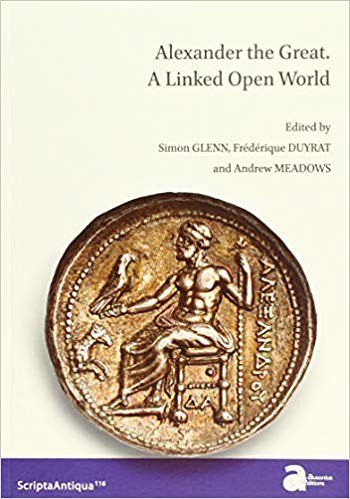
PREV ARTICLE
NEXT ARTICLE
FULL ISSUE
PREV FULL ISSUE
NEW BOOK: A LINKED OPEN WORLDIn April 2017 the Oxford Paris Alexander Project (OPAL) hosted a conference at the University of Oxford entitled “A Linked Open World: Alexander the Great, Transnational Heritage and the Semantic Web.” OPAL is designed to supplement and enhance the American Numismatic Society's PELLA project with additional data and an interpretative framework. From an April 6, 2017 ANS Pocket Change blog post:
I noticed this week that the conference proceedings have been published. -Editor
For more information, or to order, see:
As more and more numismatic information moves online the foundational concepts discussed in this conference will drive at least the academic world forward, but might also influence the commercial end of numismatics someday. Here's an excerpt from Sebastian Heath's paper. -Editor
Numismatics is a field of study that benefits from a well-developed vocabulary for describing both its basic concepts – such as “coin”, “mint”, or “hoard” – and the relationships between those concepts. Such an opening sentence must come, however, with the firm qualification that the definitions of numismatic terms and the realities of their usage are not always precise and consistent within the discipline. Nonetheless, it is the case that the vocabulary numismatics has at its disposal has been effective. By which I mean that as a centuries-old specialism, numismatics has made essential contributions to the study of the ancient Mediterranean world. This observation is true at the level of large-scale historical analysis and in the discussion of the role of coins in specific economic environments. For their part, the papers in this volume show the contribution that the study of coins can make to scholarship on a defined historical era, in this case the post-Alexandrian Hellenistic Kingdoms and neighbouring regions. Clarity of language is nonetheless important and in the context of this particular chapter it is the terms “concept” and “relationship” that most need defining. By “concept” I mean the basic intellectual building blocks that comprise the field of study. “Coin”, “mint”, and “hoard” are among the concepts that will occur most frequently here; and while it is not the case that these concepts and others are so familiar that they can always stand without further discussion, such consideration is outside the scope of this paper given their fundamental role in the discipline. By very loose analogy, I take the concept of “coin” to be as axiomatic as numbers are in mathematics. We are confident they exist, even though there are many kinds. Relationships, for their part, connect concepts. Numismatists express the connection between coins and mints in various ways. “Issued by”, “produced at”, even the very short “of” are common phrases to indicate the relationship between a mint and the coins associated with it; phrases, however, that surely highlight the issue of variable usage raised above. For its part, “mint” is an evidently useful, though very ambiguous, concept. It can mean the city in which a coin was struck, even if that city, by way of incorporation into a territorial state, is not necessarily the issuing authority. A more direct usage, by which “mint” is an attribute of a coin, is also common. Because this chapter is fundamentally about an aspect of digital numismatic practice, one can look to websites of public collections as a good indication of everyday usage, wherein this last use of “mint” is usual. For more information, see:

Wayne Homren, Editor The Numismatic Bibliomania Society is a non-profit organization promoting numismatic literature. See our web site at coinbooks.org. To submit items for publication in The E-Sylum, write to the Editor at this address: whomren@gmail.com To subscribe go to: https://my.binhost.com/lists/listinfo/esylum All Rights Reserved. NBS Home Page Contact the NBS webmaster 
|
